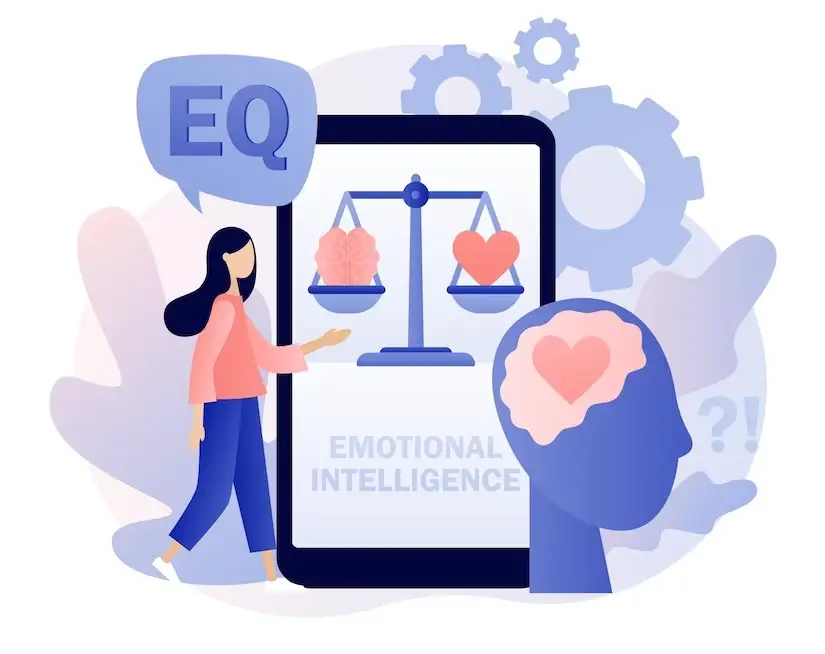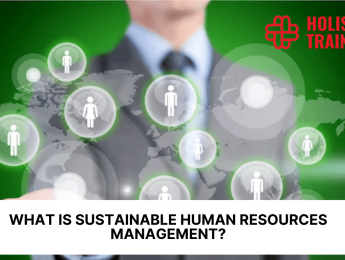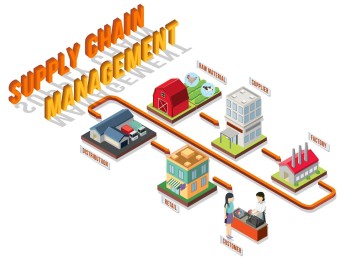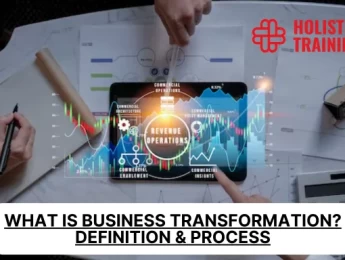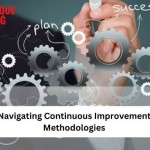With the business landscape constantly evolving, adaptability has become the cornerstone of success. Organisations must navigate through the ebbs and flows of change to stay relevant and competitive. However, managing change can be daunting, necessitating a structured approach. In this blog post, we delve into the essence of Lewin's Change Management Model, a powerful framework to facilitate seamless organisational transformations.
What Is Kurt Lewin's Change Model?
Kurt Lewin's Change Management Model is a seminal theory that focuses on understanding how individuals and organisations transition from their current state to a desired future state. The model was first introduced in the 1940s and has since become a foundational framework in change management theory.
At its core, Lewin's model recognises that change is a process and not a one-time event. It emphasises the importance of addressing human behaviours and attitudes during the change process. The model's primary goal is to minimise resistance to change and facilitate a smoother transition for individuals and teams within the organisation.
Why Do We Need Lewin's Change Management Model?
Change, whether it's a minor adjustment or a radical transformation, can evoke a wide range of emotions in individuals. Fear, uncertainty, and resistance are common reactions when people are faced with the prospect of change. Without a structured approach to managing change, organisations risk falling into chaos and may face significant setbacks. This is precisely where Lewin's Change Management Model comes into play, offering a multitude of reasons why it is indispensable in navigating successful organisational transformations.
1- Understanding the Human Element of Change
Lewin's model acknowledges that change is not just about implementing new processes and structures; it is a deeply human process. Employees are at the heart of every organisation, and their emotions, attitudes, and behaviours play a crucial role in the success or failure of any change initiative. By recognising the significance of the human element, leaders can tailor their approach to manage resistance effectively, foster collaboration, and encourage employee engagement.
2- Minimising Resistance and Overcoming Obstacles
Resistance to change is a natural reaction as employees are often comfortable with the familiar and uncertain about the unknown. Lewin's Change Management Model helps leaders anticipate potential resistance and develop strategies to overcome it. By addressing concerns, providing support, and involving employees in the decision-making process, leaders can create an environment that fosters openness to change and encourages everyone to embrace it.
3- Facilitating a Structured Change Process
One of the primary reasons for the model's popularity lies in its systematic and structured approach to change. Lewin's three-stage process (Unfreeze, Transition, and Refreeze) provides a clear roadmap for leaders to follow. This systematic framework helps leaders make informed decisions, allocate resources efficiently, and maintain a sense of direction throughout the change journey.
4- Enhancing Employee Buy-In and Commitment
When employees are actively involved in the change process and have a say in shaping the future, they are more likely to be committed to its success. Lewin's model emphasises the importance of inclusivity and engagement, enabling leaders to gain valuable insights and garner the support needed for a successful transformation.
5- Aligning Organisational Goals and Resources
Organisational change often involves a shift in goals, strategies, and resource allocation. By employing Lewin's Change Management Model, leaders can ensure that the change aligns with the organisation's overall vision and mission. This alignment enhances the chances of achieving the desired outcomes and prevents potential conflicts between different departments or teams.
6- Reducing Uncertainty and Anxiety
Uncertainty and anxiety can paralyse employees and impede progress. Not only that but also statistics show that stress is one of the main factors why millions of workers miss work everyday. Lewin's model encourages clear and transparent communication throughout the change process, helping employees understand the reasons behind the change and what to expect. This reduces ambiguity and fosters a sense of security, creating a more conducive environment for change.
7- Nurturing a Culture of Continuous Improvement
Organisations that embrace change as an ongoing process tend to thrive in dynamic environments. Lewin's Change Management Model instils a culture of continuous improvement by promoting adaptability and agility. Leaders who leverage this model can empower their teams to embrace change as an opportunity for growth and innovation rather than a daunting challenge.
To best implement Lewin’s Change Management Model, we encourage you to create a visual chart to outline your organisation's change process, which can prove instrumental in securing buy-in from both employees and leadership. One of the tools you can use to do that is Lucidchart.
The 3 Stages of Change in Lewin's Model
Lewin's Change Management Model consists of three interrelated stages, which form a straightforward yet powerful process for driving organisational change:
Unfreeze
The first stage, "Unfreeze," involves preparing the organisation and its members for the forthcoming change. This is a crucial phase as it seeks to break down existing patterns, routines, and mindsets that may hinder the change process.
During the unfreezing stage, leaders need to:
- Communicate the need for change: Clear communication is essential to help employees understand why change is necessary and what the desired outcomes are. Leaders should address concerns and provide a compelling vision for the future.
- Create a sense of urgency: It is vital to generate a shared understanding that change is not optional but a critical requirement for the organisation's survival and success.
- Involve key stakeholders: Involving employees and other stakeholders in the decision-making process fosters a sense of ownership and commitment to the change.
- Provide support and resources: Supporting employees through the change process with resources, training, and coaching can boost their confidence and willingness to embrace the change.
Transition
The transition stage is the core of the change process. It involves moving from the old ways to the new ways, implementing the proposed changes, and overcoming any resistance that arises.
During the transition stage, leaders need to:
- Communicate openly and frequently: Transparency and open communication are essential in managing uncertainties and addressing concerns that may emerge during the transition.
- Empower employees: Encourage autonomy and empower employees to make decisions within the framework of the change. This can foster a sense of responsibility and commitment.
- Provide training and support: Equip employees with the necessary skills and knowledge to adapt to the new processes and technologies effectively.
- Celebrate small wins: Acknowledging and celebrating milestones achieved during the transition can boost morale and maintain momentum.
Refreeze
The final stage, "Refreeze," is all about stabilising the changes and integrating them into the organisation's culture and practices. This stage helps solidify the new norms and ensure that the change becomes a sustainable part of the organisation's identity. In this stage, leadership plays a crucial role in assuming the role of a change agent, according to a study.
During the refreeze stage, leaders need to:
- Reinforce the new behaviours and practices: Continuously promote the desired behaviours and practices to embed them in the organisation's culture.
- Recognise and reward success: Recognising and rewarding individuals and teams who embrace the change can reinforce positive behaviour and inspire others to do the same.
- Provide ongoing support: Continued support, coaching, and mentoring are essential during this stage to maintain motivation and address any remaining resistance.
Challenges of Using Lewin's Change Model
While Lewin's Change Management Model provides a robust framework for navigating organisational transformations, it is not without its challenges. Recognising and addressing these challenges is crucial for leaders to implement the model effectively and ensure the success of change initiatives.
1. Resistance and Emotional Barriers
One of the primary challenges is resistance from individuals within the organisation. Employees may resist change due to fear of the unknown, uncertainty about their roles, or concerns about how the change will impact them personally. Addressing these emotional barriers requires strong leadership, clear communication, and a commitment to understanding and mitigating employee concerns.
2. Rigidity of the Three-Stage Model
While the three-stage model provides structure, it may be perceived as too rigid for certain types of changes. Some transformations may not neatly fit into the unfreeze, transition, and refreeze stages, potentially hindering the adaptability of the model in complex and rapidly changing environments. Leaders must be prepared to tailor and supplement the model as needed.
3. Overlooking Continuous Improvement
Lewin's model, with its distinct stages, may create the perception that change is a one-time event rather than an ongoing process. Organisations risk stagnation if they fail to instil a culture of continuous improvement beyond the defined stages. Leaders must actively promote adaptability and agility to avoid complacency after the initial change efforts.
4. Cultural and Diversity Considerations
The model's universal applicability may overlook cultural and diversity considerations within an organisation. Different cultures and diverse perspectives may respond differently to change, requiring leaders to be sensitive to varying needs and experiences. A one-size-fits-all approach may lead to resistance or unintended consequences.
5. Communication Challenges
Effective communication is critical at every stage of Lewin's model, and challenges in communication can hinder the success of the change initiative. Leaders may struggle to convey a compelling vision for the future, resulting in confusion or lack of buy-in. Clear, transparent, and consistent communication strategies are essential to overcome these challenges.
6. Resource Allocation and Time Constraints
Implementing Lewin's model requires adequate resources and time. Leaders may face challenges in allocating the necessary resources, whether in the form of training programs, support mechanisms, or technology. Additionally, time constraints can impact the thoroughness of each stage, potentially leading to rushed decisions or inadequate preparation.
7. Leadership Competency
Successfully implementing Lewin's model depends heavily on leadership competency. Leaders must possess the skills to navigate the emotional landscape of change, inspire trust, and effectively communicate the vision. Insufficient leadership capabilities can result in a lack of direction, exacerbating resistance and hindering the change process.
Navigating these challenges requires a thoughtful and adaptive approach. Leaders should be proactive in addressing emotional and cultural nuances, promoting continuous improvement, and cultivating strong communication practices to ensure the successful application of Lewin's Change Management Model in diverse organisational contexts.
Embracing Visual Tools for Change Management
Implementing Lewin's Change Management Model is a multifaceted task that demands clear communication and strategic planning. One powerful enhancement to this process is the incorporation of visual tools, which can provide a tangible roadmap for both leaders and employees. In this section, we explore the importance of visual tools, their impact on change management, and a specific tool that can prove instrumental in this context.
Importance of Visual Tools in Change Management
1. Clarity and Understanding
Visual tools, such as charts and diagrams, offer a visual representation of the change process. This clarity helps employees and stakeholders better understand the various stages and the overarching goals of the transformation. Complex concepts become more accessible, reducing confusion and fostering a collective understanding.
2. Buy-In and Engagement
Visualisation aids in conveying the 'big picture' of the change initiative. When employees can see the entire journey laid out visually, they are more likely to buy into the process. Engagement increases as individuals comprehend their roles in the larger context, instilling a sense of purpose and connection to the organisational transformation.
3. Communication Enhancement
Visual tools serve as a powerful supplement to verbal and written communication. They provide an additional layer of information that appeals to different learning styles. This holistic approach ensures that the message is effectively conveyed to diverse audiences, minimising the risk of misunderstandings.
4. Strategic Alignment
Change initiatives often involve multiple departments and teams. Visual tools help align these various stakeholders by presenting a unified vision. Leaders can use these tools to illustrate how each department contributes to the larger organisational goals, fostering a sense of collaboration and shared responsibility.
Lucidchart: A Visual Tool for Change Management
One exemplary tool for creating visual representations of change processes is Lucidchart. Lucidchart is an intuitive and collaborative diagramming platform that enables organisations to create dynamic charts, flowcharts, and process maps. Here's how Lucidchart can enhance the implementation of Lewin's Change Management Model:
1. Interactive Charts
Lucidchart allows users to create interactive and dynamic charts that can be easily shared with stakeholders. This interactivity enhances engagement, enabling employees to explore different elements of the change process at their own pace.
2. Real-Time Collaboration
Change management is a collaborative effort, and Lucidchart facilitates real-time collaboration. Multiple team members can work on the same chart simultaneously, fostering collective input and ensuring that everyone is on the same page.
3. Versatility
Lucidchart's versatility allows users to create a wide array of visual materials, from simple flowcharts to intricate process maps. This adaptability ensures that leaders can tailor the visual representation to suit the complexity of their specific change initiative.
4. Accessibility
Lucidchart is a cloud-based platform, ensuring that visual charts are accessible to all relevant stakeholders regardless of their physical location. This accessibility is particularly valuable in today's global and remote work environments.
5. Integration with Other Tools
Lucidchart seamlessly integrates with other collaboration tools, such as Google Workspace and Microsoft Teams. This integration streamlines the incorporation of visual tools into existing communication channels, making it easier for leaders to disseminate information.
By leveraging visual tools like Lucidchart, organisations can enhance the implementation of Lewin's Change Management Model. Visual representations not only clarify the change process but also contribute to increased engagement, better communication, and strategic alignment among stakeholders. As leaders navigate the complexities of change, embracing visual tools becomes a valuable asset in ensuring the success of organisational transformations.
Table 1: Comparison of visual tools for change management
Visual Tool | Key Features | Integration with Collaboration Tools |
Lucidchart | Interactive charts, real-time collaboration. | Seamless integration with Google Workspace. |
MindMeister | Mind mapping, easy collaboration. | Integration with Microsoft Teams. |
Miro | Infinite canvas, visual collaboration. | Integrates with Slack for seamless communication. |
Trello | Kanban boards, task-oriented approach. | Collaborates seamlessly with Jira. |
Microsoft Visio | Diverse diagramming options. | Integration with Microsoft 365 Suite. |
Future Trends in Change Management
As the business landscape continues to evolve, change management strategies must adapt to meet the demands of a dynamic environment. Several emerging trends are shaping the future of change management, influencing how organisations approach and implement transformative initiatives.
1. Technological Integration
The integration of advanced technologies, such as artificial intelligence (AI), automation, and analytics, is reshaping change management. Organisations are leveraging technology to streamline processes, enhance communication, and gather valuable data insights, resulting in more efficient and data-driven change initiatives.
2. Remote Work Dynamics
The rise of remote work has become a significant factor influencing change management. Organisations are reimagining traditional change models to accommodate the unique challenges and opportunities presented by remote work structures. Strategies that prioritise virtual collaboration, digital communication tools, and flexible change processes are gaining prominence.
3. Employee Well-being and Inclusivity
The focus on employee well-being and inclusivity is transforming change management into a more human-centred process. Organisations are recognising the importance of supporting employees' mental health, fostering inclusivity, and ensuring that change initiatives consider the diverse needs and experiences of the workforce.
4. Agile and Iterative Approaches
Agile methodologies, known for their flexibility and adaptability, are increasingly being applied to change management. This iterative approach allows organisations to respond quickly to feedback, adjust strategies based on evolving circumstances, and embrace a more continuous and responsive change process.
5. Sustainability and Social Responsibility
Sustainability and social responsibility are becoming integral components of change management strategies. Organisations are incorporating environmental and social considerations into their transformation initiatives, aligning change goals with broader sustainability objectives and ethical practices.
6. Continuous Learning Culture
A shift towards a continuous learning culture is influencing how organisations approach change. Change management is not viewed as a one-time event but as an ongoing process. Organisations are fostering a culture that embraces continuous improvement, innovation, and adaptability as part of their day-to-day operations.
7. Data-Driven Decision-Making
The increasing availability of data is driving a shift towards data-driven decision-making in change management. Organisations are leveraging analytics to assess the impact of change, identify areas for improvement, and make informed decisions throughout the entire change process.
8. Cross-functional Collaboration
Cross-functional collaboration is gaining prominence as organisations recognise the need for a holistic approach to change. Breaking down silos and fostering collaboration among different departments ensures that change initiatives consider the interconnected nature of various organisational functions.
9. Change Leadership and Emotional Intelligence
The role of leadership is evolving to place greater emphasis on emotional intelligence and change leadership skills. Leaders are expected to navigate the emotional landscape of change, inspire trust, and effectively communicate the vision for transformation, recognising that the human element is central to successful change management.
As organisations navigate the future of change management, these trends reflect a shift towards more holistic, adaptable, and people-centric approaches. Embracing these evolving strategies will be essential for organisations to thrive in an era of continuous change and uncertainty.
Conclusion
In conclusion, Lewin's Change Management Model is a valuable framework that guides leaders in navigating the complexities of organisational transformation. By understanding the three stages of change - unfreeze, transition, and refreeze - and implementing them with a people-centric approach, leaders can effectively manage resistance, drive employee buy-in, and achieve successful outcomes. Embracing change is not only essential for the survival of organisations in today's rapidly evolving world but also a catalyst for growth and innovation. As leaders, let us harness the power of Lewin's Change Management Model to create positive and lasting changes within our organisations and beyond.
As you embark on this transformative journey, consider enrolling in our course, ‘Benchmarking Your Performance & Making Continuous Improvements,’ to supercharge your leadership skills. Uncover the secrets of sustained success and innovation, propelling your organisation towards new heights in an ever-evolving landscape. Embrace change with confidence, and let your leadership legacy unfold through the lens of continuous improvement. Enrol now or contact us for more information!
Frequently Asked Questions(FAQ)
How does Lewin's Change Model differ from other change management approaches?
Lewin's model stands out by its people-centric approach, recognising the significance of addressing human behaviour and attitudes during change. Unlike some models that solely focus on processes and structures, Lewin's emphasis on the human element ensures a more holistic and inclusive approach to organisational transformation.
Can Lewin's Change Model be applied to both small and large-scale changes?
Yes, Lewin's model exhibits versatility, making it applicable to various scales of change. Whether implementing a minor process adjustment or orchestrating a major organisational transformation, the fundamental principles of unfreezing, transitioning, and refreezing remain adaptable and effective.
How long does each stage of Lewin's model typically last?
The duration of each stage in Lewin's model is contingent on the complexity of the change. The Unfreeze stage may span weeks to months, the Transition stage can last several months, and the Refreeze stage may extend from several months to years. The variability underscores the need for leaders to tailor the pace to the specific context of the change initiative.
What are some common challenges leaders may face during the Unfreeze stage?
Leaders often encounter challenges such as resistance, scepticism, and fear during the Unfreeze stage. Overcoming these hurdles requires strategic measures like clear communication to address concerns, involving stakeholders in decision-making, and providing robust support mechanisms, ultimately paving the way for a smoother transition.
How can leaders maintain the changes achieved during the Refreeze stage?
To ensure the sustainability of changes initiated during the Refreeze stage, leaders must engage in continuous reinforcement of new behaviours. Celebrating successes, both big and small, creates a positive culture surrounding the change, while actively shaping an organisational environment that supports and sustains the desired transformation over the long term is essential.



